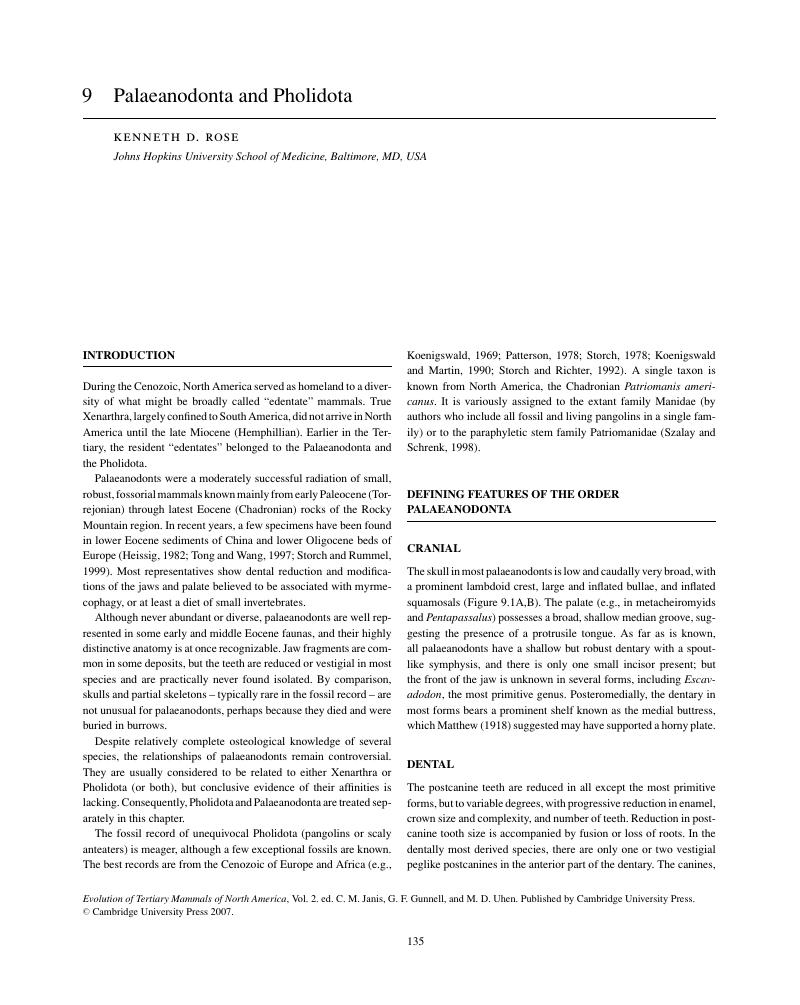9 - Palaeanodonta and Pholidota
from Part III - “Edentata”
Published online by Cambridge University Press: 07 September 2010
Summary

- Type
- Chapter
- Information
- Evolution of Tertiary Mammals of North America , pp. 135 - 146Publisher: Cambridge University PressPrint publication year: 2008
References
- 2
- Cited by



